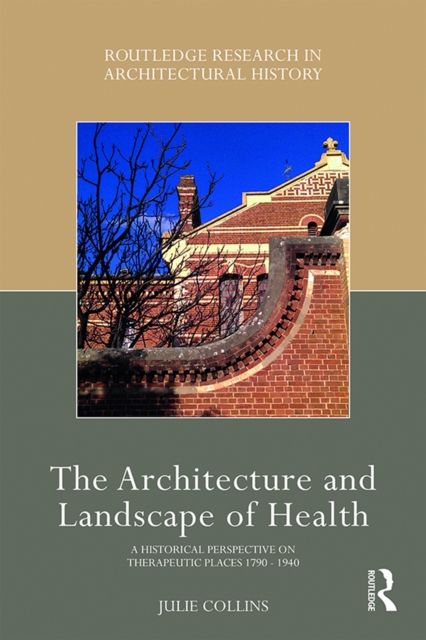
The Architecture and Landscape of Health : A Historical Perspective on Therapeutic Places 1790-1940 EPUB
by Julie Collins
Part of the Routledge Research in Architectural History series
EPUB
Description
The Architecture and Landscape of Health explores buildings and landscapes that were designed to treat or prevent disease in the era before pharmaceuticals and biomedicine emerged as first line treatments.
Written from an architectural perspective, it examines the historical relationship between health and place through the emergence of dedicated therapeutic building types from the late eighteenth to the early twentieth century, a time when the environment was viewed as integral to the health of both the individual and the population.
This book provides an overview of ideas surrounding health and place and their impact on architecture and designed landscapes.
Different therapeutic buildings and places are examined, including public parks, asylums, sanatoria, leprosaria, quarantine stations, public baths and healthy homes.
Each chapter outlines the medical context, common therapies, a history of buildings designed in response to these, and an examination of how such places were perceived to have functioned.
Illustrated using geographically and temporally diverse examples, the book includes designs drawn from locations across the world including Europe, the Americas, Africa, Australia and Asia.
The Architecture and Landscape of Health identifies and examines moments in the conversation between health and design, and is a timely look back on the resultant buildings and places, offering insights which could inform the design of therapeutic places of the future.
An ideal read for researchers, academics and upper-level postgraduate students interested in architecture, and architectural history, particularly relating to healthcare design and medical history.
Information
-
Download - Immediately Available
- Format:EPUB
- Pages:218 pages, 2 Line drawings, black and white; 37 Halftones, black and white; 39 Illustrations, black
- Publisher:Taylor & Francis Ltd
- Publication Date:24/03/2020
- Category:
- ISBN:9780429862342
Other Formats
- Hardback from £135.00
- Paperback / softback from £36.35
- PDF from £35.99
Information
-
Download - Immediately Available
- Format:EPUB
- Pages:218 pages, 2 Line drawings, black and white; 37 Halftones, black and white; 39 Illustrations, black
- Publisher:Taylor & Francis Ltd
- Publication Date:24/03/2020
- Category:
- ISBN:9780429862342










